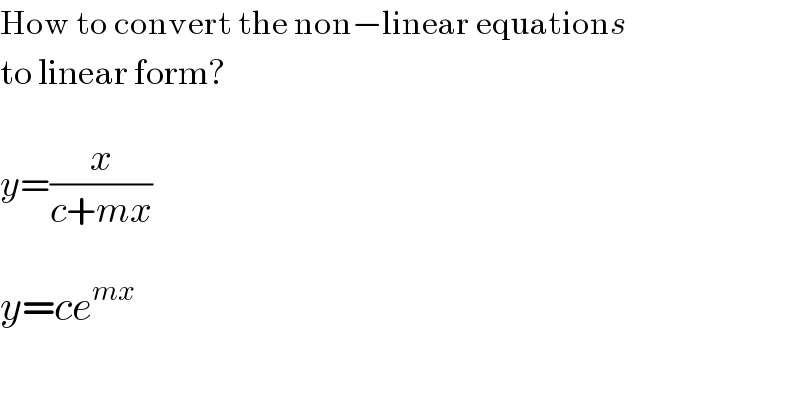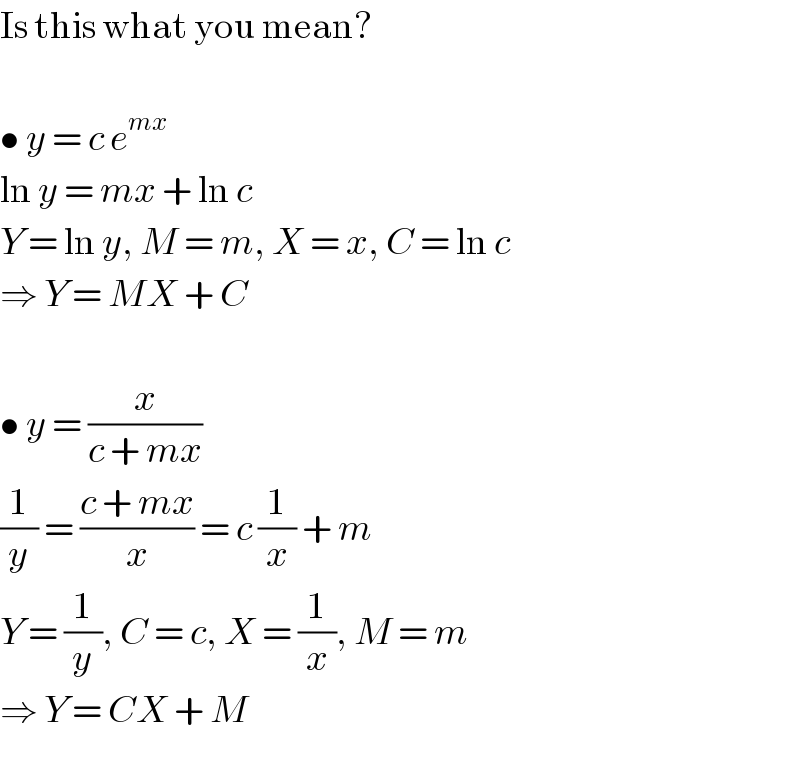Question Number 92247 by askask last updated on 05/May/20

$$\mathrm{How}\:\mathrm{to}\:\mathrm{convert}\:\mathrm{the}\:\mathrm{non}−\mathrm{linear}\:\mathrm{equation}{s} \\ $$$$\mathrm{to}\:\mathrm{linear}\:\mathrm{form}? \\ $$$$ \\ $$$${y}=\frac{{x}}{{c}+{mx}} \\ $$$$ \\ $$$${y}={ce}^{{mx}} \\ $$
Commented by Joel578 last updated on 06/May/20

$$\mathrm{Is}\:\mathrm{this}\:\mathrm{what}\:\mathrm{you}\:\mathrm{mean}? \\ $$$$ \\ $$$$\bullet\:{y}\:=\:{c}\:{e}^{{mx}} \\ $$$$\mathrm{ln}\:{y}\:=\:{mx}\:+\:\mathrm{ln}\:{c} \\ $$$${Y}\:=\:\mathrm{ln}\:{y},\:{M}\:=\:{m},\:{X}\:=\:{x},\:{C}\:=\:\mathrm{ln}\:{c} \\ $$$$\Rightarrow\:{Y}\:=\:{MX}\:+\:{C} \\ $$$$ \\ $$$$\bullet\:{y}\:=\:\frac{{x}}{{c}\:+\:{mx}} \\ $$$$\frac{\mathrm{1}}{{y}}\:=\:\frac{{c}\:+\:{mx}}{{x}}\:=\:{c}\:\frac{\mathrm{1}}{{x}}\:+\:{m} \\ $$$${Y}\:=\:\frac{\mathrm{1}}{{y}},\:{C}\:=\:{c},\:{X}\:=\:\frac{\mathrm{1}}{{x}},\:{M}\:=\:{m} \\ $$$$\Rightarrow\:{Y}\:=\:{CX}\:+\:{M} \\ $$
